What does the word success mean to you?
Success is my own self-satisfaction. Each time I am satisfied with my own work, I am successful.
What is your idea of success in art?
You see, art and appreciation of that art are really two sides of the same coin. If art of a certain standard is appreciated by a good and knowledgeable audience, then one can say that the art has achieved its purpose. Art must never be created for an audience that may not be well-versed in it. However, an artiste is fully responsible for impacting/uplifting any kind of audience to the level of the art he is presenting. So, success in art is a two-way road. A piece of art can be considered successful if it is appreciated by a good audience. On the other hand, if the art can uplift an audience to the standard of the performance, it has certainly achieved success.
After a full-fledged performance, an artiste usually feels physically very exhausted. You know how the lights and rehearsals and all of that can be! However, if the performer feels spiritually fresh, energetic, and fulfilled after a tiring performance, he has achieved his success.
As a young student, I struggled a lot. I struggled to learn and perform the art form. I failed again, and again, and again. My success in my career has been very slow, but I can say the progress has been steady. I believe I still have a long way to go. I have learnt that in art one is never a failure, even if one fails, it is a glorious opportunity to learn from that and grow…
In your own journey in dance, how has your idea of success evolved?
I must share my personal journey with you. You know, as a young student, I struggled a lot. I struggled to learn and perform the art form. I failed again, and again, and again. My success in my career has been very slow, but I can say that the progress has been steady. I believe I still have a long way to go. I have learnt that in art one is never a failure, even if one fails, it is a glorious opportunity to learn from that and grow… And the student must work very hard towards growing. A teacher can teach the student only the technique. It is like when you sow a seed, you can provide it with all the conditions to grow, water, sunlight, manure, but you cannot ensure the flower. The flower, the artiste, must bloom naturally, on its own. Hard work pays, it certainly has its rewards!
The success of a film solely depends on the money it makes at the box office. What is the measure to determine success in art?
Yes, the success of a film is solely dependent on the money it makes at the box office. Now, this initial success is very temporary, and the producer, director, actors, etc reap its benefits. However, this is not a real indicator of the impact the film has had on people. If the film lingers on in the minds of people for decades to come, if it has made a long-lasting impact on society, then it can be called truly successful. So you see, the initial commercial success is not the success of the film, which is the actual art.
In the context of classical art forms, the purpose of these art forms is not to entertain. In a way it is for entertainment and enjoyment, yes of course, but that is not its purpose. Its purpose is to uplift the audience morally and spiritually. If the art succeeds in that purpose while entertaining an audience, that is its success. A nd I believe that to be true of any medium of art - cinema, visual, or performance.
Do you think art – of any kind – is dependent on a commercial aspect to sustain?
Well, for the art to sustain, the artiste must sustain, and for the artiste to sustain, especially in this modern age, he/she needs to be supported financially. If one wants to put up a good show, he/she needs the funds to be able to do that. The plight of society is very sad! When an artiste travels by bus, he/she is disregarded, and considered an artiste of low standard. But when an artiste arrives in a car, he/she is assumed to be an artiste of high caliber. Although, the truth may be that the artiste who arrived by local transport is a way better performer than the one who arrived by car. So I am beginning to feel that money is an essential aspect for the arts to sustain. I feel, without money, even though one maybe a very great performer, he/she will not be completely accepted.
Now, let me make one thing clear. Money needs to come to an artiste, nevertheless, the artiste, cannot and should not pursue the art for money or popularity. He/she must have that clarity, and pursue the art for the sake of the art. The artiste must be very deeply conscious about that. The money is necessary only to enable him to present his work. I feel that to encourage and support good artistes is also largely the responsibility of the society.
Most classical art forms are focused on the metaphysical, on something beyond the superficial. As an artiste, in today’s day and age, do you ever encounter a conflict between the material and the subtle, the visible and the invisible?
Yes of course. In this day and age particularly, to have a focused vision is certainly challenging. So one must always stand firm on the foundation of his roots and tradition… It is most important to nourish that tradition, make it stronger and keep it in front of one’s eyes at all times. Once the foundation is strong, an artiste can adapt himself to the modern environment, and perhaps, think of new ideas to present his work. It is essential to innovate for the modern audiences, however, one must be cautious to not stray away, even remotely, from the framework and the foundation of the traditional art form.

You have been the recipient of some of the nation’s most prestigious awards, and have been appreciated by the highest authorities and influence-makers of the country. What is the recognition/gratification that you most cherish?
Awards and accolades are all external, and although they are special, they are not the actual motivation for me. What I cherish most is the difference I am able to make through my performance. For instance, when I am performing a climax scene, the audience is usually still, motionless, like statues sitting in front of me with tears in their eyes, and that experience, that is the real reward, the actual gratification.
I was performing a Greek tragedy in Athens, Greece, sometime ago, and after the performance, only a handful of people from the audience were allowed inside the green room to speak to us. Amongst them was one old man who showed me a wet towel and told me, “You made me cry, cry and cry. You made our characters appear like demigods.” That is one of my most cherished rewards, I think. Every time I think of this incident, it gives me more joy and encourages me to go on!
You know, in Malayalam, there is a word bhaya-bhakti (fearful devotion). We must have some fear towards God, and we must have the same reverential fear towards the art. The art is always greater than the artiste
You are described as a rare blend of purity and progress. How have you managed to balance these polarities?
In the initial phase of my training, for about 16 to 18 years, I went through harsh, rigid, painful, rigorous training. That was a very strong foundation for me, and my work is fixed on that foundation. I must admit that the credit for this goes to my very reverent Gurus, who provided me with the conditions to make my foundation solid. Thanks to those roots, I have been able to experiment and use the facilities of modern times to my advantage.
As a young artiste, the Government of India gave me the opportunity to produce one experimental work, every year. I decided to take it up. When we did Othello, during our first performance, very fortunately, my Guru happened to be there, and after he watched it, he told me, “Now my efforts have become successful.” He saw his efforts bearing fruit through me. I have realized that while keeping the framework of the art form intact, one also has to work very hard on the subject of the performance, especially if it is a contemporary or Western theme. I have to justice to Shakespeare, and also to the technique of Kathakali. One cannot overpower the other. You know the teacher who taught me Othello told me, “I can never see Othello succeeding in Kathakali." When he saw the performance, his outlook had changed completely. We have to be sincere in what we do, most importantly.
As a much-loved and revered Guru of Kathakali, how do you inculcate in your students the subtle art of maintaining a pure intent in the pursuit of the arts, while practicing in an environment that is conducive to instant gratification and commercial success? Is this a challenging process?
Yes of course it is very challenging! I feel that as a teacher, before I start teaching, I must study the student first. I must study his history, mental attitude, capacity, everything… Only once I understand the student, can I determine an appropriate teaching approach for him/her.
Sometimes, we have students from abroad who want to get a basic idea of Kathakali in twenty days, or who want to learn one specific item. In this case, I cannot train them in the same way I train students who have been learning for 20 years, and yet I have to help them fulfill their goal, while inculcating the nuances of the art form in them. With all my students, I usually start with the most basic and easy aspects, and allow them to enjoy that. As they start taking the pleasure of that, according to their capacity, I move on to the higher aspects.
Once I was supposed to take a workshop in France. When I reached there, the organiser warned me about the group, and said I may have a very tough time with them. He apologized in advance, and asked me to forgive them if they are very difficult. I thought let me see what happens… Most of them were theatre students, and a couple of them had a basic idea about dance. After two days, when the organiser came to our class, she was astonished. Everybody was very cooperative and extremely disciplined. She asked me how I managed… The truth is that I had not done anything. This is the power of the guru-shishya relationship. In this relationship, the teaching is not fully outside, but from soul to soul. For instance, I could not force them to be disciplined. On the first day, when I went to class, I lit a lamp, and did my namaskaram (salutations). On the second day, they had brought their own incense sticks to light. So, the teacher can change a student without saying anything. And many times, it so happens, that a student changes a teacher’s approach.
Oh is it? Can you recall one such instance from your experience?
One day, I was teaching rhythm in class, and one student who was in her early 20s, she just could not get it, and she started crying in class. I felt very bad about it, and I thought about what went wrong. The next day I asked her about what happened. She said, “You teach the beating and rendering together, and that is extremely hard for me to follow.” So the next day, I thought her only beating, and the following day, I thought her only rendering, after which she got it. She taught me that our approach to everybody must not be the same.
Despite diminishing audiences for the arts, do you think the younger generation will continue to practice art for the sake of the art?
In my observation, these days, the standard of the audience is declining, and that is certainly because the standard of performance is declining. So, if somebody is presenting something very serious, the audience cannot really appreciate that. The audience has got into a habit of enjoying the external paraphernalia, the lights, the music, the décor etc. Performance art has become a sort of enjoyment for them. In Kerala, there was a time when the audience used to watch a Koodiyattam performance, on the same theme for thirty nights, but nowadays, even if they watch a Koodiyattam performance for two hours, they say, “It is too long! We are getting bored!” It is not entirely the fault of the audience; the performers are largely responsible for allowing deterioration in performance standards. Like I said before, a performer has the power to cultivate a good audience by presenting good work.
These days, the education system of the country has advanced a lot, providing numerous career opportunities to students, and training them in skill and science. But I often wonder, how much of this is teaching them to become better human beings, simply good human beings! There is not even a remote attempt towards that. So, the aim of arts must be to nurture the inner worlds of people, and to help them become better human beings. Students from a very young age must be exposed to good art, and they will naturally grow the seed of goodness and nobility in them. Arts organizations must host lecture-demonstrations for students by experienced and good artistes, so we can cultivate their eyes and perception to enjoy and appreciate a good performance. Art must not drag people lower, but raise them higher.
When we did Othello, during our first performance, very fortunately, my Guru happened to be there, and after he watched it, he told me, “Now my efforts have become successful.” He saw his efforts bearing fruit through me. I have realized that while keeping the framework of the art form intact, one also has to work very hard on the subject of the performance, especially if it is a contemporary or Western theme
I remember when I used to travel to Delhi in 1974 to perform, barely 10 to 12 people used to be in the audience. Gradually, as I kept performing in Delhi, the audience increased to 200. And I believe it is a mighty feat to create a good audience of 200 to 500 for a classical arts performance. Unlike commercial art, we don’t need huge numbers, just sensitive people who can appreciate and soak in it.
Do you ever feel afraid for the art?
You are right! Sometimes, I feel afraid. And this fear is not because of students or the audience, but because of the approach and attitude of senior performing artistes and teachers. You know, in Malayalam, there is this word, bhaya-bhakti (fearful devotion). We must have some fear towards God, and we must have the same reverential fear towards the art. The art is always greater than the artiste. I may be completely wrong but I feel that some artistes, once they receive recognition, appreciation, and success, they begin to lose this reverence. These are people who are role-models for the younger generation, and if this approach continues, the art will suffer a lot. This is really my concern, and unfortunately, I don’t have a solution for it.
As a devoted practitioner and an exponent of Kathakali, what is the direction the art form must take to live up to its original purpose?
Kathakali is a well-balanced art form of dance, drama, and music. If one of these components gets more prominence than the other, then the art form will lose its balance. I used to feel that the drama aspect was becoming stronger than the other two, and I was a bit anxious about the future of the art form. But recently, I was invited to a 20-hour performance in Kerala where a lot of young, upcoming artistes performed. After watching that performance, I felt that the younger generation is really going back to the roots, the tradition of the art form. That gave me immense joy and hope. The performers were all in their early 20s, and are not trying to imitate or follow their seniors. If they continue and carry forward the legacy in the same direction, the future of Kathakali is certainly bright and sparkling.
Interviewed by Payal H Chhabria
3 comments Comments
SIGN UP TO RECEIVE OUR WEEKLY NEWSLETTER IN YOUR INBOX





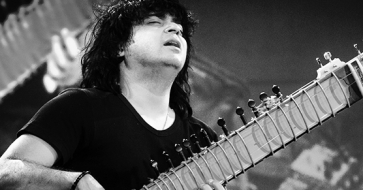
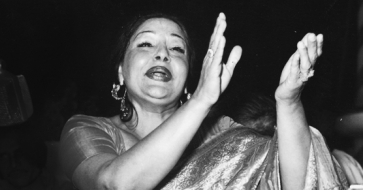
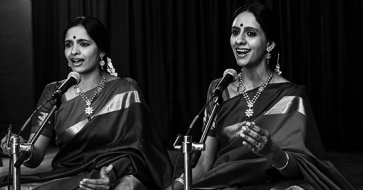
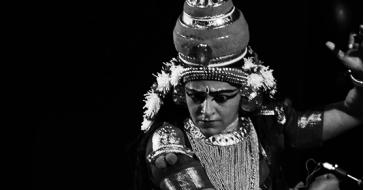
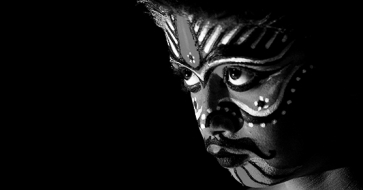
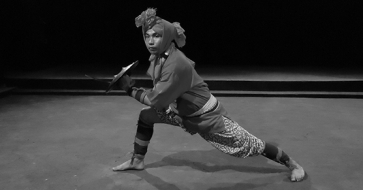
Srinivasan Ramamoorthy
September 13, 2017
Swati potulwar
September 02, 2017
Sivaramakrishnan
August 27, 2017